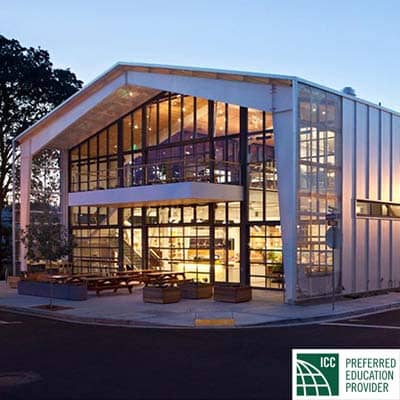
Successful Use of Pre-Engineered Metal Buildings
Learn the advantages and disadvantages of using a pre-engineered metal building and why PEMBs are economical. This course will cover foundations, building envelope, industrial equipment and code.
- Alabama
- Alaska
- Arizona
- Arkansas
- California
- Colorado
- Connecticut
- Delaware
- District Of Columbia
- Florida
- Georgia
- Hawaii
- Idaho
- Illinois
- Indiana
- Iowa
- Kansas
- Kentucky
- Louisiana
- Maine
- Maryland
- Massachusetts
- Michigan
- Minnesota
- Mississippi
- Missouri
- Montana
- Nebraska
- Nevada
- New Hampshire
- New Jersey
- New Mexico
- New York
- North Carolina
- North Dakota
- Ohio
- Oklahoma
- Oregon
- Pennsylvania
- Puerto Rico
- Rhode Island
- South Carolina
- South Dakota
- Tennessee
- Texas
- Utah
- Vermont
- Virginia
- Washington
- West Virginia
- Wisconsin
- Wyoming
Description
This course will cover the advantages and disadvantages of using a pre-engineered metal building and why PEMB’s are economical. We will examine what needs to be considered when designing the foundations, building envelope, building systems, industrial equipment as well as code considerations. This lesson should equip the designer and builder to know the basic facts about Pre-Engineered Metal Buildings.
After completing this course, you will be able to:
- Outline the advantages and disadvantages of Pre-Engineered buildings
- Identify the code requirements related to bearing capacity of foundations and slabs
- Describe hazardous occupancies and control areas that are often found in this type of structure
- Summarize the code considerations and issues related to special industrial construction
This course covers:
- Foundations
- Equipment
- Systems
- Envelope
- Code
- Special Industrial Issues
- Geology
- Ground Water
- Grounding
- Repairs
- Decorative Shapes
- Deferred Submittals
Credit(s) earned on completion of this course will be reported to AIA CES for AIA members. Certificates of Completion for both AIA members and non-AIA members are available to print upon completion of the course. This course is registered with AIA CES for continuing professional education. As such, it does not include content that may be deemed or construed to be an approval or endorsement by the AIA or any material of construction or any method or manner of handling, using, distributing, or dealing in any material or product.
